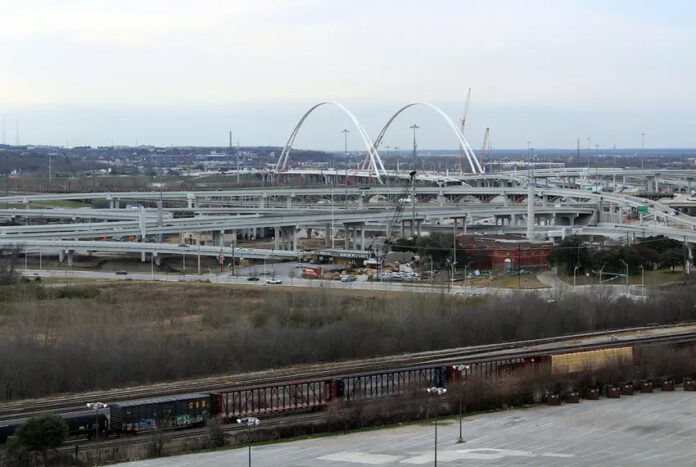Gordon Dickson Fort Worth Star-Telegram
FORT WORTH, Texas — The federal government is serious about spending money on high-speed rail, and Texas could be among the first beneficiaries.
The recent interest in investing in bullet trains capable of going 200 mph or faster comes at a time when many Texans — after hearing promises about high-speed rail for the past 12 years — are skeptical that such a project will ever come to fruition.
But Transportation Secretary Pete Buttigieg is talking up the potential of using modernized passenger trains to revolutionize the way people travel across the Lone Star State. And several members of Congress, including a former official with the proposed Texas Central Railway high-speed rail project who now represents Massachusetts in the House of Representatives, have filed a bill that would provide $205 billion in funding for projects nationwide over the next five years.
The Texas Central Railway project, which is backed by private investors, would provide a high-speed rail connection from downtown Dallas to Houston, using the same technology as Central Japan Railway Co., also known as JR Central.
Several other projects are under study in Texas as well.
One proposal would extend high-speed rail from the Texas Central Railway station in Dallas to Arlington and Fort Worth — with possible future connections to Austin, San Antonio and perhaps Monterrey, Mexico.
The Regional Transportation Council, the Dallas-Fort Worth area’s federally-recognized planning body, also is making a pitch for a Hyperloop test track to be built in the region.
Hyperloop is a new, yet unproven technology in which a very small amount of electrical energy is used to power a magnetic system that allows passenger pods to travel at incredible speeds inside a tube.
Buttigieg championed Texas high-speed rail during several recent public appearances, including during a Wall Street Journal podcast March 23 in which he mentioned the state by name without being prompted.
“I mean, if you just imagine what it would mean for Minneapolis and Milwaukee and Chicago and Louisville and Cincinnati and Detroit and all these cities, all to be within a swift ride of each other,” Buttigieg said on The Journal podcast last week. “But also think about Texas, think about what it would mean in Texas to have excellent high speed rail.”
When asked if his vision for rail was achievable in a bipartisan infrastructure bill, the former South Bend, Indiana, mayor and Democratic presidential candidate replied that it was unacceptable for the U.S. to lack a passenger rail system on par with other countries.
“Yeah, I mean, my question is, when it comes to rail, why should Texas be inferior to China?” he said. “And I’m going to keep putting it that way and see if it resonates.”
A few days earlier, Buttigieg also expressed support for Texas high-speed rail during the South By Southwest conference, which this year was held virtually.
The Biden administration is expected to soon introduce a $3 trillion economic plan that could include a record amount of funding for development of high-speed rail.
And several members of Congress have filed a bill dubbed the American High-Speed Rail Act that would provide $41 billion annually for five years. Among those members is Rep. Seth Moulton, D-Mass., who in the early 2010s lived in the Dallas area and served as a managing director with Texas Central Railway.
The American High-Speed Rail Act would create at least 2.6 million jobs over five years, Moulton said.
“High-speed rail is faster, cleaner, safer and better for our economy,” Moulton said in a statement. “It will connect people to more jobs in new places, give Americans freedom and choice in how they travel, and put us on par with the rest of the world.”
In addition to the $41 billion in annual federal grants available for rail projects, the bill would provide incentives worth $38 billion for high-speed rail construction, he said.
Projects would be prioritized on a variety of factors to determine if they qualify for funding.
Some of the priorities include providing rail to communities that aren’t well-served by airlines, connecting cities with a high volume of traffic with 750 miles of each other and connecting “hot job markets” to communities where housing is affordable, according to information on Moulton’s website.
Carlos Aguilar, chief executive officer of the company building the Texas Central Railway project, said Texas could become the first state in the U.S. to open its high-speed rail line.
“We at Texas Central look forward to bringing the very first high-speed rail system to the nation!” Aguilar said in a statement.
Other states where high-speed rail projects are in various stages of development include California, Florida and Nevada.




